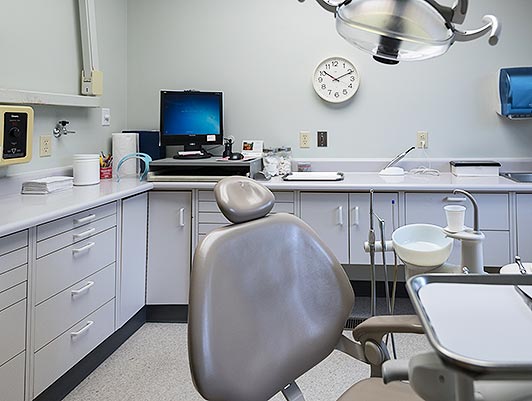FAQ: Tooth Restoration and Dental Cosmetics

There is no difference between a cap and a crown.
Dental implants are substitutes for natural tooth roots and rely on the jawbone for support. Strategically placed, implants can now be used to support cemented bridges, eliminating the need for a denture. The cost tends to be greater, but the implants and bridges more closely resemble real teeth.
Dentures are no longer the only way to restore a mouth that has few or no restorable teeth. Strategically placed support, or implants, can now be used to support cemented bridges, eliminating the need for a denture. The cost tends to be greater, but the implants and bridges more closely resemble the “feel” of real teeth. Dental implants are becoming the alternative of choice to dentures, but not everyone is a candidate for implants. Call your dentist for advice.
Dental amalgam, or silver filling material, is a mixture of mercury, liquid, and other metals. The release of mercury in silver fillings is so small that it is much less than what patients are exposed to in food, air and water. There are, however, other materials that can be used for restorations. These include gold, porcelain, and composite resins. Fluoride is a compound of the element fluorine, which is found throughout nature. Fluoride is absorbed easily into the tooth enamel, especially in children’s growing teeth. Once teeth are developed, fluoride makes the entire tooth structure more resistant to decay and promotes remineralization, which aids in repairing early decay before the damage is visible. Radiographs, or “x-rays”, help your dentist determine the presence or degree of periodontal disease, abscesses, and many abnormal growths such as cysts and tumors. They can help pinpoint the location of cavities and other signs of disease that may not be possible to detect through a visual examination. All health care providers are sensitive to patients’ concerns about exposure to radiation. Your dentist has been trained to prescribe radiographs when they are appropriate and to tailor the radiograph schedule to your individual needs. By using state-of-the-art technology, such as digital radiography, and by staying knowledgeable about recent advances, your dentist knows which techniques, procedures and “X-ray” films can minimize your exposure to radiation.
A root canal is a procedure done to save the damaged or dead pulp in the root canal of the tooth by cleaning out the diseased pulp and reshaping the canal. The canal is filled with gutta percha, a natural rubber material, to prevent recontamination of the tooth. The tooth is then restored with possibly a post and/or a crown. This enables patients to keep the original tooth and help prevent future fracture.